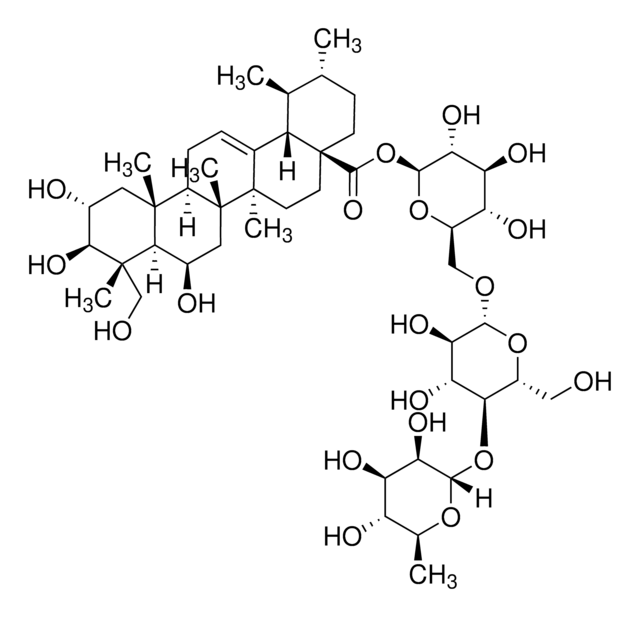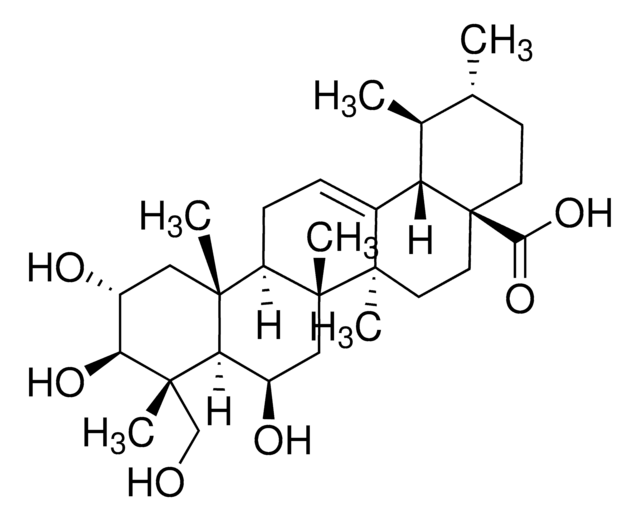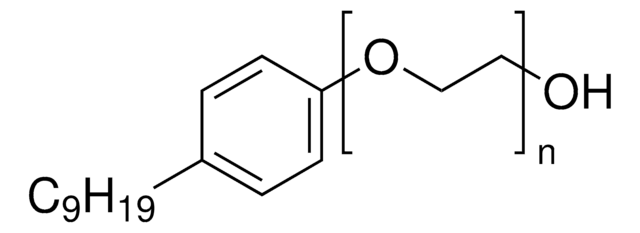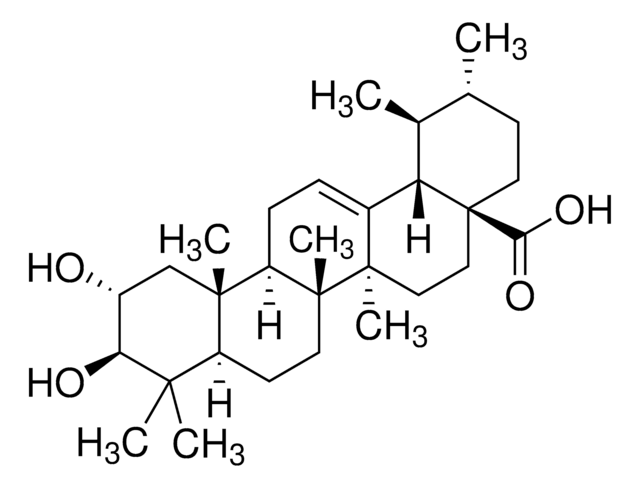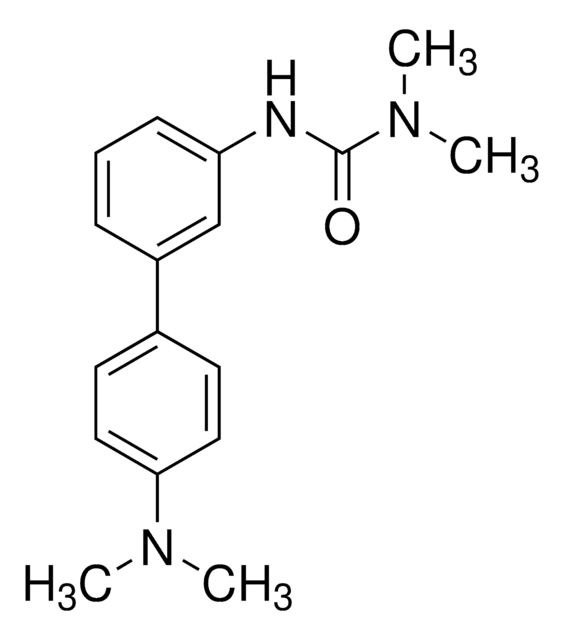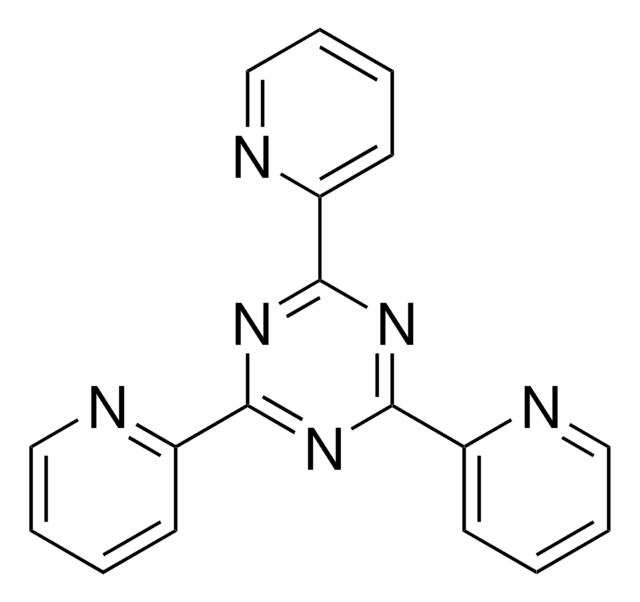Kluczowe dokumenty
A2612
Asiatic acid
≥98% (HPLC), from Centella asiatica
Synonim(y):
2α,23-Dihydroxyursolic acid, Dammarolic acid, NSC 166063
About This Item
Polecane produkty
pochodzenie biologiczne
Centella asiatica
Próba
≥98% (HPLC)
Formularz
powder
warunki przechowywania
protect from light
kolor
white
mp
325-330 °C (lit.)
rozpuszczalność
methanol: 1 mg/mL, clear, colorless
Zastosowanie
metabolomics
vitamins, nutraceuticals, and natural products
temp. przechowywania
2-8°C
ciąg SMILES
C[C@@H]1CC[C@@]2(CC[C@]3(C)C(=CC[C@@H]4[C@@]5(C)C[C@@H](O)[C@H](O)[C@@](C)(CO)[C@@H]5CC[C@@]34C)[C@@H]2[C@H]1C)C(O)=O
InChI
1S/C30H48O5/c1-17-9-12-30(25(34)35)14-13-28(5)19(23(30)18(17)2)7-8-22-26(3)15-20(32)24(33)27(4,16-31)21(26)10-11-29(22,28)6/h7,17-18,20-24,31-33H,8-16H2,1-6H3,(H,34,35)/t17-,18+,20-,21-,22-,23+,24+,26+,27+,28-,29-,30+/m1/s1
Klucz InChI
JXSVIVRDWWRQRT-UYDOISQJSA-N
Szukasz podobnych produktów? Odwiedź Przewodnik dotyczący porównywania produktów
Opis ogólny
Zastosowanie
- Anticancer agents
- Glycogen phosphorylase inhibitors
- Hepatoprotectants
Działania biochem./fizjol.
Kod klasy składowania
11 - Combustible Solids
Klasa zagrożenia wodnego (WGK)
WGK 3
Temperatura zapłonu (°F)
Not applicable
Temperatura zapłonu (°C)
Not applicable
Wybierz jedną z najnowszych wersji:
Certyfikaty analizy (CoA)
Nie widzisz odpowiedniej wersji?
Jeśli potrzebujesz konkretnej wersji, możesz wyszukać konkretny certyfikat według numeru partii lub serii.
Masz już ten produkt?
Dokumenty związane z niedawno zakupionymi produktami zostały zamieszczone w Bibliotece dokumentów.
Klienci oglądali również te produkty
Nasz zespół naukowców ma doświadczenie we wszystkich obszarach badań, w tym w naukach przyrodniczych, materiałoznawstwie, syntezie chemicznej, chromatografii, analityce i wielu innych dziedzinach.
Skontaktuj się z zespołem ds. pomocy technicznej

